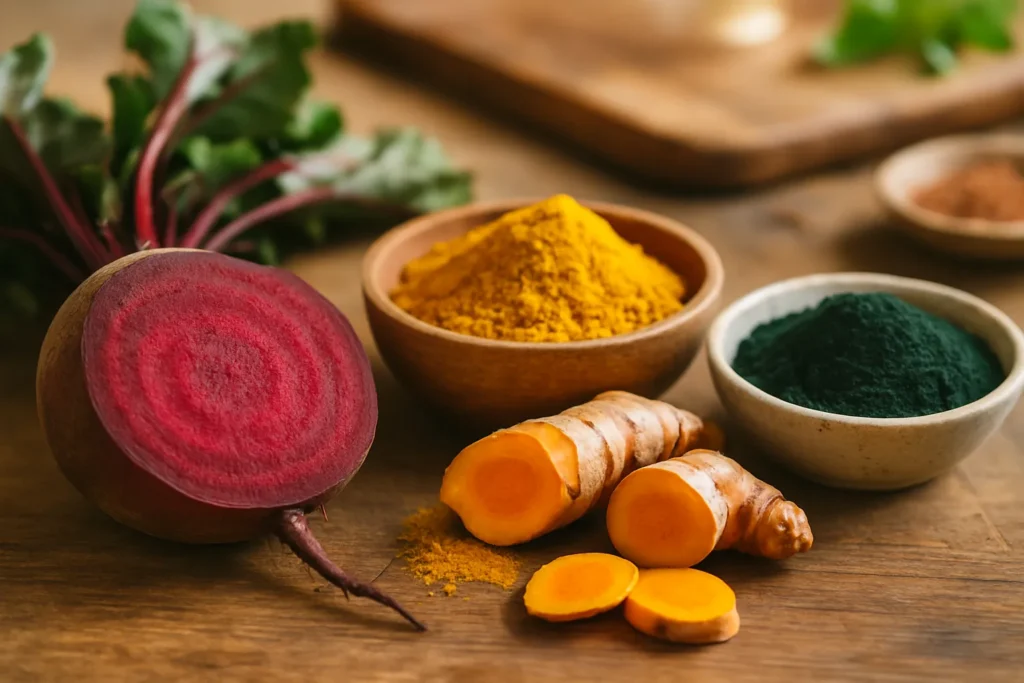The FDA Embraces Change: Natural Colors Replace Synthetics
Imagine grabbing a rainbow-colored cereal off your grocery store shelf, only to wonder what makes it so vibrant. With the U.S. Food and Drug Administration’s (FDA) latest move, you might soon see more familiar— and safer—names on those ingredient lists. The FDA’s approval of three new natural food dyes marks a critical shift in American food policy. Gone are the days of unpronounceable synthetic chemicals coloring your child’s Thursday snack. Instead, as announced by Health and Human Services Secretary Robert F. Kennedy Jr., the agency is phasing out petroleum-based color additives—like the notorious Red No. 40—by late 2025. In their place, food companies can now use Galdieria extract blue (from volcanic red algae), butterfly pea flower extract, and calcium phosphate. This move doesn’t just reflect scientific consensus on the risks posed by artificial dyes; it showcases the growing power of consumer advocacy and a progressive emphasis on public health.
Many families have long suspected what researchers now confirm: synthetic dyes in children’s foods are linked to hyperactivity and other neurobehavioral issues. As far back as the 1970s, concerns about food dyes led to the removal of some formulations from markets across Europe, while the U.S. lagged. “We’re finally catching up to the science and to global standards,” notes Dr. Marti MacCullough, a nutrition scientist at NYU, in a recent interview.
Galdieria extract blue, derived from a heat-loving red alga found in acidic volcanic springs, is both stable and vibrant—even in notoriously tricky processed foods. Butterfly pea flower, with its eye-catching violet hue, has enchanted cultures in Southeast Asia for generations. The FDA’s approval now covers not just drinks but cereals, snack chips, pretzels, and more. Calcium phosphate, a familiar compound, can finally replace some of the last petroleum dyes in ready-to-eat chicken and confections.
Consumer Health Demand Drives Regulatory Momentum
Food policy rarely changes overnight, but recent years have shown a groundswell of consumer demand for transparency and safety in what we eat. Public pressure—fueled by parental concerns and mounting scientific evidence—became impossible for regulators to ignore.
Consider this: a 2023 Pew Research Center report found that two-thirds of Americans now read ingredient labels, with nearly half expressing distrust toward artificial colorants. For the FDA and HHS, ignoring these voices became politically untenable, particularly as state governments like California and New York debated their own bans on synthetic dyes. Kennedy’s “Make America Healthy Again” initiative piggybacked on these trends; his public comments have railed against petrochemical dyes’ risks, especially for children and vulnerable communities. The industry, sensing the regulatory winds shifting, has voluntarily committed to removing these ingredients—well ahead of a federal mandate.
States aren’t just talking; they’re acting. California became the first state to ban Red No. 3 in 2023, sending shockwaves through multinational food manufacturers. The FDA’s new approvals should accelerate this domino effect, providing companies with viable natural alternatives. As Harvard food historian Dr. Diane Eagle explains, “Every era has its unhealthy fad—America’s love affair with synthetic additives ranks among the worst. Today, the market is dictating a brighter path, not just literally, but for our nation’s health.”
“When families learn that the blue in their child’s breakfast comes from volcanic algae, not petrochemicals, the sense of relief is palpable. Regulatory change like this is long overdue—and our collective well-being demands it.”
The food industry is hardly dragging its feet. French innovator Fermentalg, which patented the Galdieria sulphuraria extract Everzure, and global ingredient house Givaudan were quick to celebrate these FDA approvals. Their hues promise not only to brighten frosting and beverages, but to fundamentally shift the global food industry’s relationship with color and safety.
The Politics—and Pitfalls—of Shifting to Natural
For progressives, this moment underscores the necessity of prioritizing public health over industry convenience. But the transition is not without its obstacles. Smaller food makers worry about the cost and stability of natural dyes, which historically break down more easily than their synthetic counterparts. Galdieria’s algae pigment, for example, stands out for its chemical resilience—a fact not lost on manufacturers concerned about shelf life and consumer expectations. Butterfly pea flower’s earthy notes challenge dessert companies to balance flavor and vibrancy without resorting to more chemicals.
Beyond that, questions arise about access and food justice. Will all families, regardless of income, benefit from these safer, natural choices? That depends not just on regulatory progress, but on the willingness of food corporations to avoid “premium pricing” traps that leave lower-income communities with fewer healthy options. Attempts to greenwash products—marketing them as natural despite minimal change—must also be rigorously monitored by advocates and agencies alike.
The historical parallels are hard to ignore. The American tobacco industry once insisted that certain additives were harmless—until the evidence became undeniable. Synthetic dyes may not carry the same immediate danger, but their cumulative effect on children’s health—and their outsize presence in foods targeted at working-class and minority communities—demands the same urgent scrutiny. “If we do not close loopholes and keep the pressure on retailers, we risk repeating the missed opportunities of past regulatory battles,” observes Marion Nestle, a leading voice in food policy reform.
The FDA’s swift, science-driven approval of these natural colorants will almost certainly become a landmark moment—if we ensure its promises become reality for everyone. The transition away from petroleum dyes is happening, but how equitable, speedy, and effective it is will depend on our vigilance and the political will to keep public well-being at the center of policy.

